Snowdrops: Winter Forage For Bees
by Anita Deeley at BeverlyBees.com
An easy to grow bulbous perennial, Snowdrops provide both a Nectar and Pollen source for bees and native pollinators in late winter and early spring when other food may still be very hard to find.
Blooms: Feb/March Bee Forage: Pollen & Nectar Pollen Color: Yellow Orange
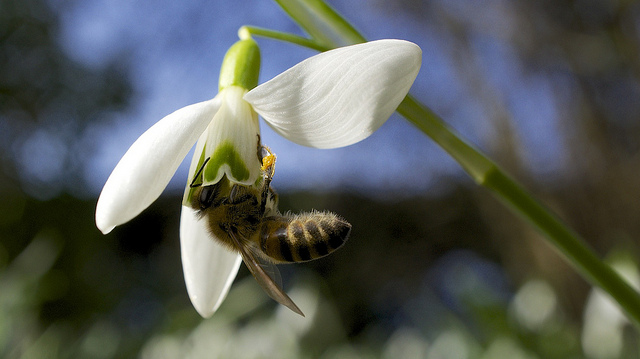
Snowdrops are small white flowers that bloom in clusters in late winter to early spring in planting zones 3-8, with a few varieties that can be planted in zone 9. They are a favorite of bees and a treat for gardeners alike as their arching white blossoms hint at the first sign of spring. These hearty gems can even be seen sprouting their little white heads up through snow and ice, weeks before spring is officially here. They can bloom anytime from January – March, but are usually seen in late February and early March in Massachusetts.
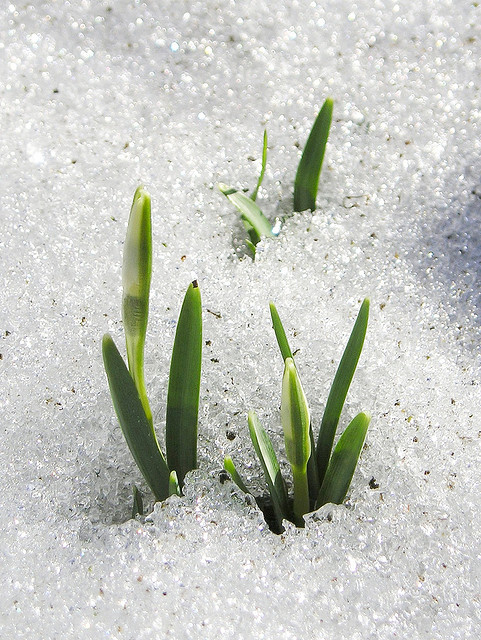
As snowdrops bloom in many states, honey bees there are actively ramping up their colony population for spring foraging. Clusters of Snowdrops, their heads hanging full of golden orange pollen, are a welcome sign to honey bees looking to gather fresh pollen to make into bee bread to feed their developing brood. Snowdrop blossoms also serve as an early nectar source for bees. Since snowdrops bloom in many areas when not much else is available, this gives bees and native pollinators there a fresh source of nectar and pollen in late winter before spring has officially sprung. In some locations, this may be the only food source available to them at this time of year.
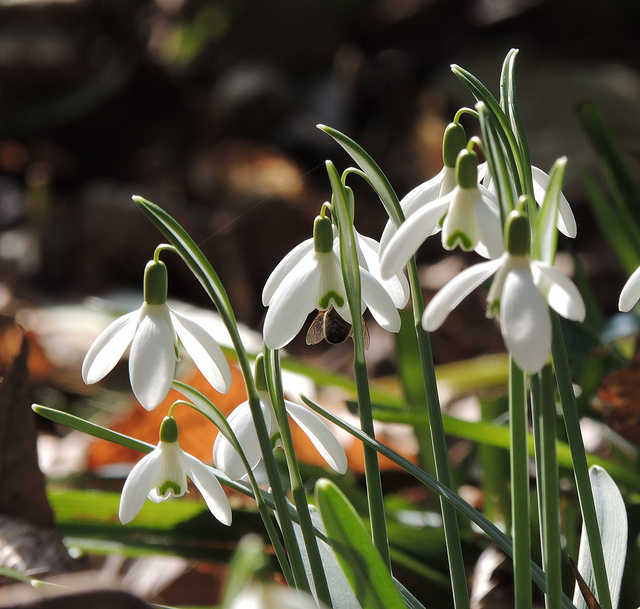
Snowdrops are a herbaceous, perennial, bulb forming plant. They are part of the Amaryllis family (Amaryllidaceae) and the genus Galanthus which means “milk flower” in Greek. Clumps of snowdrops can spread over time to carpet the entire ground in white with their impressive drooping flowers. A field of snowdrops is a wonderful early foraging source for honey bees and other native pollinators, emerging from their nests after a long winter.
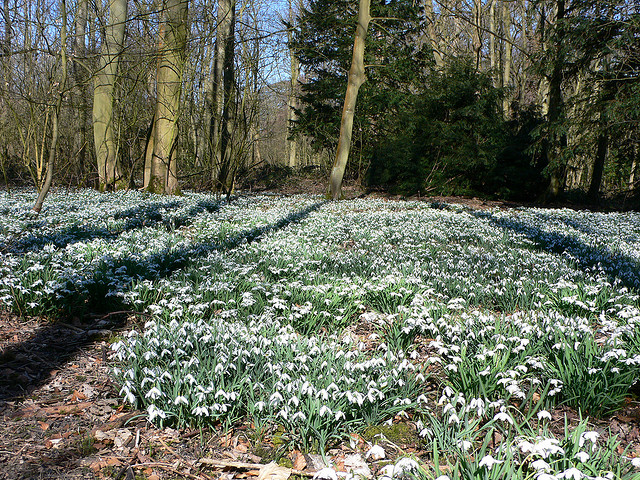
Bulbs can be purchased in the fall and should be planted quickly as they can dry out over time and die. Plant bulbs with the pointy head facing up, 2-3″ deep and 3″ apart and water well. In a few weeks, roots will sprout but greens will not show their face until late winter or early spring. You can also purchase snowdrops in the spring “in the green” meaning they have foliage and flowers.
These hearty jewels are deer resistant and do well planted at the base of deciduous shrubs and trees as they prefer some shade and well draining soil in a woodland environment with plenty of humus. After planting, it will take a couple of years for them to become naturalized and fully established by bulb offsets and self-seeding, of course the bees will do their best to help you with this!
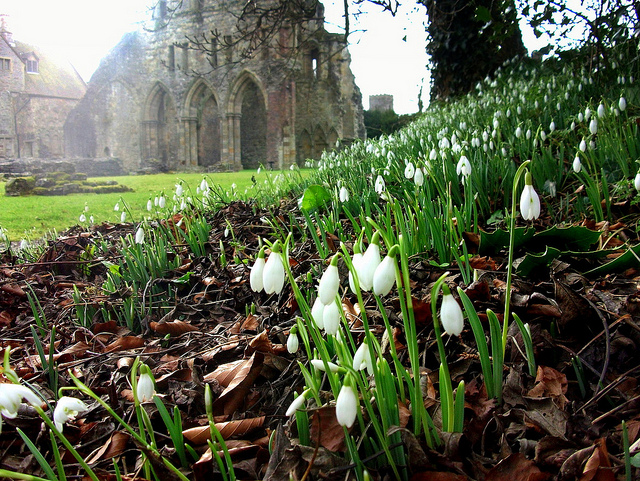
Copyright © 2011-2014. Anita Deeley, BeverlyBees.com. All rights reserved.
